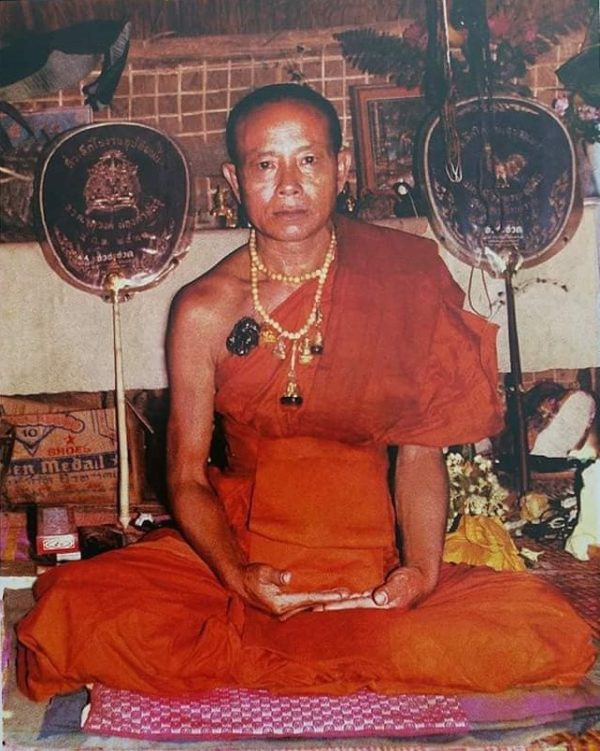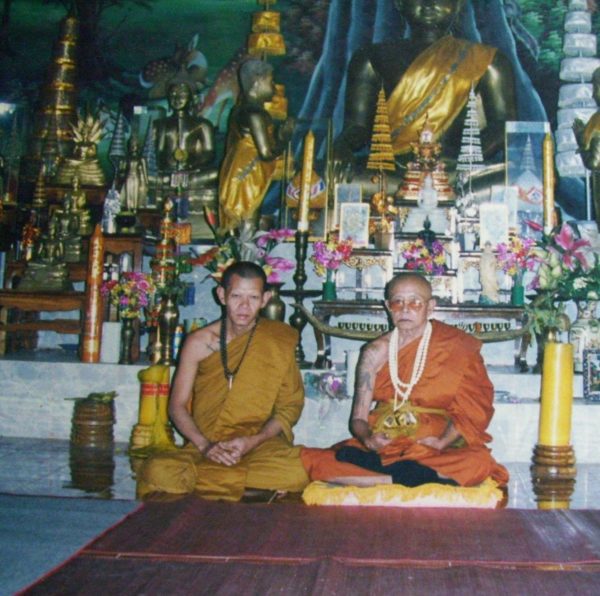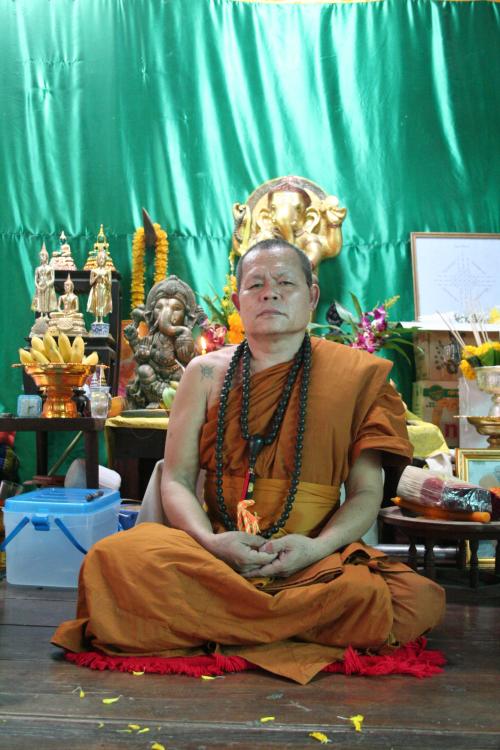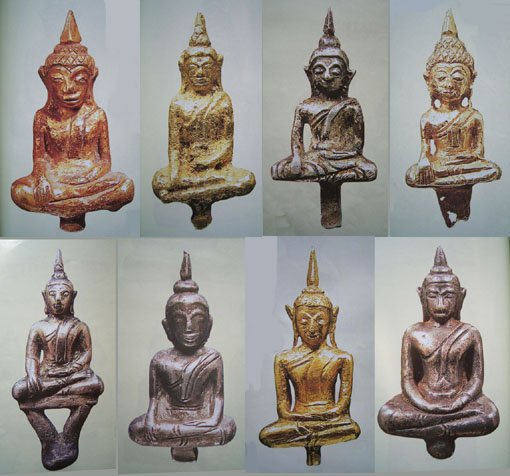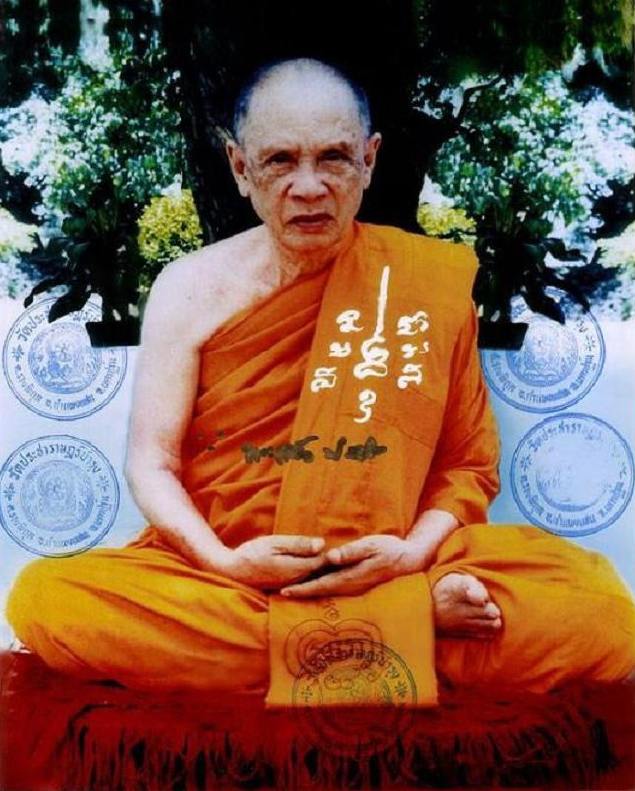Welcome to our store Uncle Chow Amulet Gallery
Archives
Biography of LP Phromma Wat Suan Himapant Nang Koi
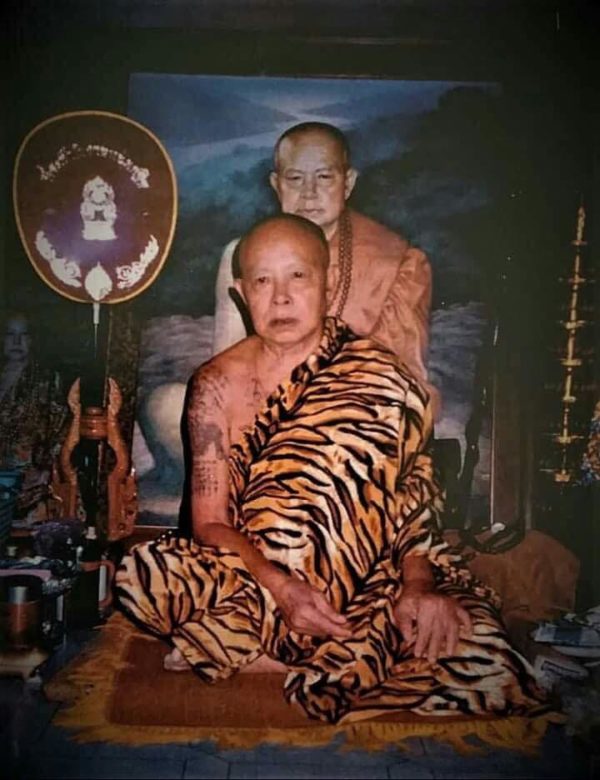
“Luang Pu Phromma Khemacharo,” also known as “Samret Kaeo,” was born on April 15, 1897 (B.E. 2440), in the Year of the Ox, in Ban Kusakon, Trakan Phuet Phon District, Ubon Ratchathani Province. He had four siblings—two brothers and two sisters. Samret Kaeo (Luang Pu Phromma Khemacharo) was the youngest son. His father’s name was Mr. Kaeo, or Chan Kaeo, and his mother’s name was Mrs. Sida Onchanthuek.
In total, he practiced in solitude (thudong) for 45 years of his life. He passed away on 23 August B.E.2545 (C.E.2002) at the age of 105 years old. Many of his amulets were in the form of Lersi, as Luang Pu had great faith in them.
Early Life
His family was poor, and his parents made a living by catching fish, snails, and crabs to feed the family. At that time, transportation was difficult, as there were no vehicles, and people traveled barefoot. Luang Pu Phromma’s life took a significant turn when his mother passed away when he was just 8 years old. After that, his father had to take on the responsibility of raising all four children alone. From a young age, Samret Kaeo (Luang Pu Phromma Khemacharo) never knew happiness. He had to work to support the family by climbing betel nut trees to earn money for his father and siblings.
Ordination
At the age of 11, his father Kaeo, or Chan Kaeo, took him to be ordained as a novice monk in Champasak, Laos. In this place, He studied magic and meditation with Somdej Lun, a Khmer Master of Jampa Sak, for 6 years. He was given the name Nen Kaeo (or Novice Kaeo) and stayed in Champasak until he turned 20, at which point he was fully ordained as a monk at Wat Phra Bath Phon San in Laos. After the death of his first teacher Somdej Lun, Nen Kaeo wandered around the country in Tudhong practice. The journey was long, and he traveled barefoot through mountainous terrain filled with dangerous animals. It was during this time that he was able to meet and study under the great Arahant Luang Phu Mun Puratto and his disciples.
After staying in Tha Uthen, Thailand for four years, he set out on a pilgrimage to stay with a hermit named Ajahn Yai in the Phu Khao Khwai Mountains in Laos for a few years.
When Luang Pu Phromma turned 40, he began wandering again as a forest monk (Thudong), sweeping and resting wherever nightfall caught him. He ate only one meal a day and sometimes went 7-8 days without eating. Throughout his journey, Luang Pu Phromma Khemacharo was fearless, as he had dedicated his life to following in the footsteps of the Buddha.
Later Years
At the age of 45, Luang Pu Phromma sought permission from the hermit at Phu Khao Khwai to go on a pilgrimage to Tibet. He stayed in Tibet for three years before moving to Yangon, Myanmar, He then continued his pilgrimage to India. After that, another three years in Cambodia, then he returned to Phu Khao Khwai to visit the hermit. Later, he traveled to Hanoi, Vietnam, and then to Lower Cambodia (now part of Cambodia). During this period, war broke out, with the sounds of gunfire, explosions, and various wild animals all around. Despite the chaos, Luang Pu Phromma remained fearless.
After that, he traveled to Malaysia and then returned to Laos once again. Luang Pu Phromma built a temple in Laos. While staying at this temple, he cut “Lek Lai” (a mystical metal/stone) from a cave using an “etue” arrow, obtaining two pieces of Lek Lai. One piece was given to a Westerner, and the other was embedded in Luang Pu’s arm. Later, he acquired two more pieces of “Lek Lai”.
In 1969 (B.E. 2512), during the Laos-Vietnam war, Luang Pu used his monk’s robe as a makeshift sunshade. A bomb fell onto his robe but miraculously rolled around without exploding.
In 1975 (B.E. 2518), Laos underwent a political change, and intense fighting ensued. Luang Pu Phromma returned to Thailand during this time. On his journey, bombs were dropped, and gunfire echoed throughout the route.
Luang Pu distributed robes and monk’s cloth to his disciples who accompanied him, using them to cover their heads. Along the way, Vietnamese soldiers fired M16 and AK-47 rifles at Luang Pu and his disciples. Luang Pu eventually arrived at the banks of the Mekong River, unsure where he would stay. He found shelter in a cave, where he meditated and had a vision of Ta Saeng, who was then a layman dressed in white. Ta Saeng had been following the teachings of Phra Khru Wirot Ratnobon (Luang Pu Rod) from Wat Thung Si Muang in Ubon Ratchathani since his time as a novice, until he mastered the teachings.
Phra Khru Wirot Ratnobon had told Ta Saeng, “If you want to learn more, seek out Nen Kaeo, or Samret Kaeo.” Eventually, Ta Saeng found Samret Kaeo at the banks of the Mekong River and invited him to reside at Wat Bupphawan (Wat Bupphawalai) in Khong Chiam District, Ubon Ratchathani Province. Samret Kaeo (Luang Pu Phromma Khemacharo) gave Ta Saeng a foot-long “Takrut Tone” that he had brought from Laos. He stayed at Wat Bupphawan in 1975 (B.E. 2518), where he minted his first batch of amulets.
However, Luang Pu did not stay long (he had a habit of never staying in one place for long). He left Wat Bupphawan and traveled to Pak Huai Rai. From there, he journeyed to stay at Phong Chang Cave in Wen Pha, where he crafted protective amulets such as *Takrud Tone* and *Takrud Roi Paet* (108-scroll amulet) as well as *palad khik* (an amulet in the shape of a phallus) from palm wood and various sacred woods. He also made holy balm and anointed oil from coconut oil, which was used to treat wounds and heal bones.
After leaving Wen Pha, he moved to Pak Chom District in Loei Province, where he built a temple called Wat Saeng Phromma Thamawat. He named it after Ta Saeng because they had built the temple together. Luang Pu Phromma Khemacharo and Ta Saeng exchanged knowledge about the *heart of 4,000 rooms* (a special mystical teaching/knowledge).
While at Wat Saeng Phromma Thamawat, Luang Pu was an active developer and deeply protective of the forest. He confronted those who tried to illegally cut down trees. One night, while staying in a cave with Ta Saeng and two novice monks, they were attacked by forest destroyers who shot at them in the cave. Later, Ta Saeng invited Luang Pu to stay at Dong Na village, where they established a meditation center called “Tham Suan Hin Pha Nang Khoi Meditation Center.”
In 1993 (B.E. 2536), Princess Maha Chakri Sirindhorn visited Ban Dong Na, and Luang Pu Phromma Khemacharo presented her with sacred objects.
During his first year at Ban Dong Na, or “Tham Phanang Khoi Meditation Center,” Luang Pu Phromma Khemacharo, known for his extensive knowledge of herbal medicine, treated many patients. Most of the people who sought his help were those whose illnesses could no longer be treated by regular doctors. Luang Pu, full of compassion, helped all who came. He needed more medicinal herbs, so he asked Mr. Suna and his disciples to help him cross the Mekong River to Laos to gather herbs. After traveling some distance in the early morning, Luang Pu instructed everyone to rest. He removed his *jivorn* (monk’s outer robe) and *angsa* (upper robe) and hung them on a tree branch. Inside the *angsa*, Luang Pu had sewn around 20 small pockets, each containing sacred Buddha images made of gold, copper alloy, and brass. He had collected these images during his wandering pilgrimage. He also hung his *yom bag*, which contained an *etue* arrow, used to cut mystical *lek lai*.
While resting, Luang Pu heard several scratching noises and then saw two or three RPG (rocket-propelled grenades) fall near his resting place. The grenades, however, failed to explode. When the Pathet Lao soldiers realized their firearms and explosives weren’t affecting Luang Pu, they aimed their guns at the branch where his robes were hanging, hoping it would fall and hit him. At this moment, Mr. Suna, fearing for Luang Pu’s safety, grabbed his M16 rifle to clear a path and escort Luang Pu out.
In the incident, a monk who had accompanied Luang Pu was shot and killed while eating a pangolin, about 100 meters away from Luang Pu. As Mr. Suna led Luang Pu out of the ambush, they were unable to retrieve the *angsa*, *jivorn*, and *yom bag*. Later, the Pathet Lao contacted Luang Pu’s disciples, offering to return his belongings for 10,000 baht. Luang Pu declined the offer, saying he did not need them. As a forest monk, he was not attached to material possessions. He also mentioned that he could still cut *lek lai* without the *etue* arrow, as he could use magical chants to do so.
The Establishment of Wat Suan Hin Phanang Khoi
Luang Pu Phromma Khemacharo built Wat Suan Hin Phanang Khoi through great hardship. The construction of the temple began in 1991 (B.E. 2534), and at that time, Luang Pu was living in a cave, unknown to the local villagers. His disciples would gather mushrooms, bamboo shoots, and other forest produce to prepare meals for him. Luang Pu, being a strict meditation monk, adhered rigorously to the practices of the Buddha. His approach differed from that of most monks; he would observe the rains retreat (vassa) for six months each year, entering it around the 15th day of the 7th lunar month and concluding it on the 15th day of the 12th lunar month, coinciding with the Loy Krathong festival.
During the day, Luang Pu welcomed disciples and followers who came to pay their respects and monitored the construction work at the temple. At night, he would meditate until around 4 a.m. and then rest for a few hours, waking at approximately 7 a.m. Despite his rigorous daily routine, Luang Pu allowed himself very little rest.
Source: siamcollection.in.th, youtube
